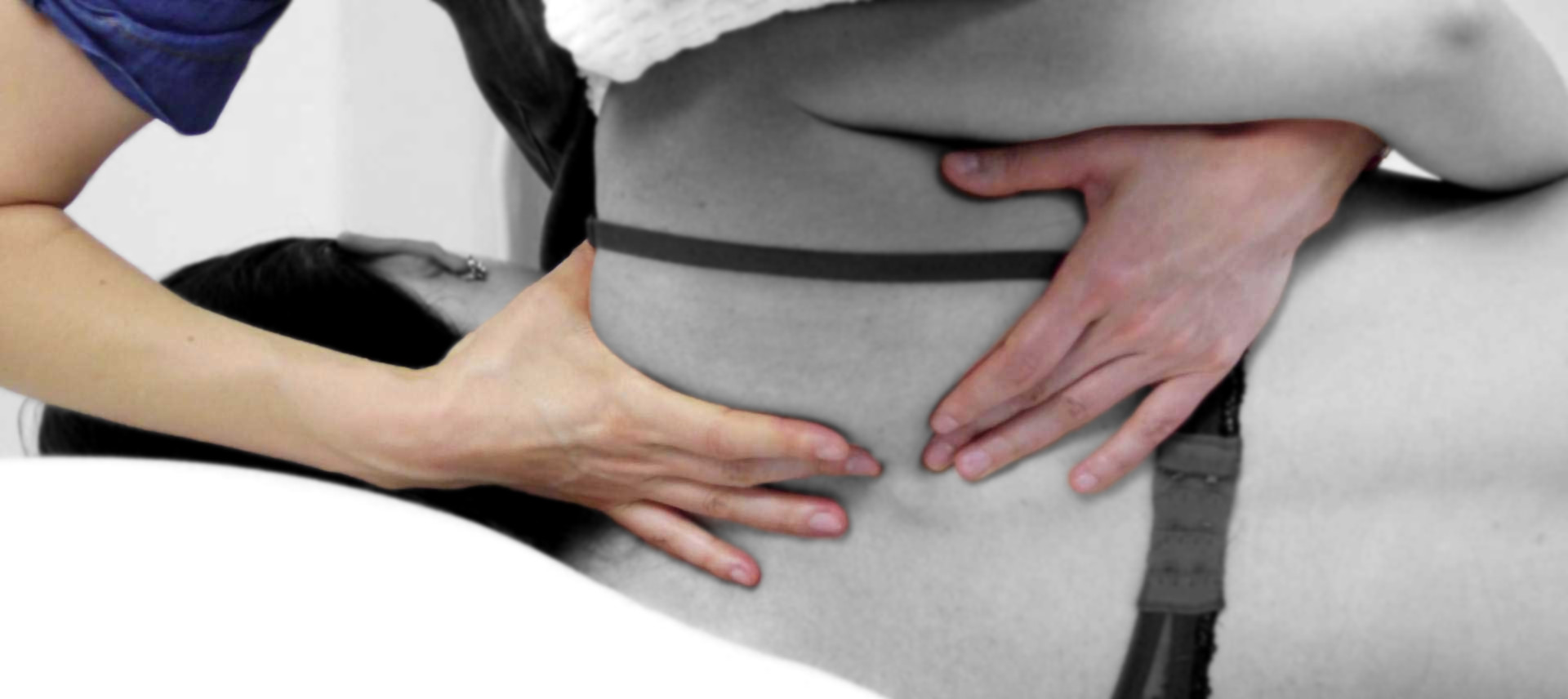A recent study from Germany shows that osteopathy gives relief to babies who have troubles eating, cry excessively, or display some sort of asymmetry (1). The sessions improved the overall wellbeing of the babies.
Not only does osteopathy help children feel better it also does so without causing side effects.
According to the study, the five most common problems in new-borns are (in brackets percentage of frequency):
- Asymmetry of the baby (18%)
- Plagiocephaly (15%)
- Troubles eating (12.5%)
- Excessive crying / infantile colic (12.5%)
- Troubles sleeping (11.5%)

Asymmetry
Asymmetry in babies comprises form, posture and movement, and occurs especially in the first six months (2). In literature it is called for example KISS syndrome, torticollis or idiopathic (=reason unknown) scoliosis in new-borns. In the study (1), asymmetry showed the following symptoms:
- Preferring one side when turning the head
- Turning the whole body to the preferred side
- Asymmetry when using the body
Osteopathy reduced the asymmetry in babies between 78% and 82%.
Plagiocephaly
The plagiocephaly is a flattening of the head, caused by distortion of the skull (3). It can be idiopathic or caused by lying on the back head or on one side too often. Another reason can be the premature closing of a cranial suture (2).
During the osteopathic study, the cranial vault index was improved with osteopathy by 51%. However, the authors said that a measurement was difficult due to the motions of the babies (1).
Troubles Eating
Osteopathy improved troubles eating by 77%. The authors did not state further if the babies were breast-fed or given the bottle.
Excessive Crying
Excessive crying can be due to the so called 3-month-colic, or regulation problems in the baby; also pain is the reason for crying (1). When the paediatrician has examined the baby and there are no underlying diseases causing the baby to cry then appointments with an osteopath are useful.
Osteopathy improved the symptom by 70%, which parents estimated as a relief.

Troubles Sleeping
Sleeping troubles appeared the least often in the study, a small portion of the babies could not sleep well. In 56% among all those babies the sleep could be improved.
Is Osteopathy Dangerous?
During the study, 3.5% of the babies displayed short-term side-effects including fatigue, fuzziness and temporarily worsening of the symptoms. The reasons are not clear; according to the authors the reaction within a short time after the session can either be due to the intervention, or a natural fluctuation of the baby’s state of health.
In total, 3200 osteopathic sessions were absolved. Remarkably, not one session caused severe or relevant side-effects being potentially dangerous for the health of the baby.
The results underline the experiences of medical health care professionals who recommend the visit at an osteopath after parents have maxed out the possibility of medical treatments without gaining satisfying results (1).
About the study
In total, nearly 1200 babies were observed for the study in 2017, in which 151 osteopathy clinics participated. All osteopaths were experienced in working with children.
On average, two to three sessions were necessary until the babies showed improvement (1200 babies; 3200 sessions). The improvement was rated by the parents on a numeric rating scale.
The study was done on children in the first year of their life. It is the world wide biggest study that has been conducted on the matter so far. The authors stated that the findings will be published in a journal soon.
References:
(1) The study was conducted by:
Akademie für Osteopathie e.V. (AFO), Römerschanzweg 5, 82131 Gauting,
Director of Studies: Florian Schwerla MSc, D.O. and
Deutsches Institut für Gesundheitsforschung gGmbH (DIG), Kirchstr. 8, 08645 Bad Elster
Chairman: Univ-Prof Dr. med. habil. K.L. Resch
Link to the original text: https://bv-osteopathie.eu/2019/01/10/kinderosteopathie-studie/
(2) Nuysink , Jacqueline, van Haastert , Ingrid C., Takken , Tim, and Helders, Paul J. M. “Symptomatic asymmetry in the first six months of life: differential diagnosis.” European Journal of Pediatrics, June 2008, 613–19. https://www.ncbi.nlm.nih.gov/pmc/articles/PMC2292481/
(3) Cummings, Carl. “La Plagiocéphalie Positionnelle.” Paediatr Child Health 16, no. 8 (2011): 495–96. https://www.cps.ca/fr/documents/position/plagiocephalie-positionnelle
